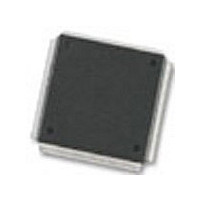MC68376BAMFT20 Freescale Semiconductor, MC68376BAMFT20 Datasheet - Page 116

MC68376BAMFT20
Manufacturer Part Number
MC68376BAMFT20
Description
Manufacturer
Freescale Semiconductor
Datasheet
1.MC68376BAMFT20.pdf
(434 pages)
Specifications of MC68376BAMFT20
Cpu Family
68K/M683xx
Device Core
ColdFire
Device Core Size
32b
Frequency (max)
20MHz
Interface Type
QSPI/SCI
Program Memory Type
ROM
Program Memory Size
8KB
Total Internal Ram Size
7.5KB
# I/os (max)
18
Number Of Timers - General Purpose
2
Operating Supply Voltage (typ)
5V
Operating Supply Voltage (max)
5.25V
Operating Supply Voltage (min)
4.75V
On-chip Adc
16-chx10-bit
Instruction Set Architecture
RISC
Operating Temp Range
-40C to 125C
Operating Temperature Classification
Automotive
Mounting
Surface Mount
Pin Count
160
Package Type
PQFP
Lead Free Status / Rohs Status
Not Compliant
Available stocks
Company
Part Number
Manufacturer
Quantity
Price
Company:
Part Number:
MC68376BAMFT20
Manufacturer:
FREESCAL
Quantity:
245
- Current page: 116 of 434
- Download datasheet (7Mb)
5.6.6 External Bus Arbitration
5-38
MOTOROLA
When the MCU completes a bus cycle while the HALT signal is asserted, the data bus
goes into a high-impedance state and the AS and DS signals are driven to their inac-
tive states. Address, function code, size, and read/write signals remain in the same
state.
The halt operation has no effect on bus arbitration. However, when external bus arbi-
tration occurs while the MCU is halted, address and control signals go into a high-
impedance state. If HALT is still asserted when the MCU regains control of the bus,
address, function code, size, and read/write signals revert to the previous driven
states. The MCU cannot service interrupt requests while halted.
The MCU bus design provides for a single bus master at any one time. Either the MCU
or an external device can be master. Bus arbitration protocols determine when an ex-
ternal device can become bus master. Bus arbitration requests are recognized during
normal processing, HALT assertion, and when the CPU32 has halted due to a double
bus fault.
The bus controller in the MCU manages bus arbitration signals so that the MCU has
the lowest priority. External devices that need to obtain the bus must assert bus arbi-
tration signals in the sequences described in the following paragraphs.
Systems that include several devices that can become bus master require external cir-
cuitry to assign priorities to the devices, so that when two or more external devices at-
tempt to become bus master at the same time, the one having the highest priority
becomes bus master first. The protocol sequence is:
BR can be asserted during a bus cycle or between cycles. BG is asserted in response
to BR. To guarantee operand coherency, BG is only asserted at the end of operand
transfer. Additionally, BG is not asserted until the end of an indivisible read-modify-
write operation (when RMC is negated).
If more than one external device can be bus master, required external arbitration must
begin when a requesting device receives BG. An external device must assert BGACK
when it assumes mastership, and must maintain BGACK assertion as long as it is bus
master.
Two conditions must be met for an external device to assume bus mastership. The de-
vice must receive BG through the arbitration process, and BGACK must be inactive,
indicating that no other bus master is active. This technique allows the processing of
bus requests during data transfer cycles.
BG is negated a few clock cycles after BGACK transition. However, if bus requests are
still pending after BG is negated, the MCU asserts BG again within a few clock cycles.
1. An external device asserts the bus request signal (BR);
2. The MCU asserts the bus grant signal (BG) to indicate that the bus is available;
3. An external device asserts the bus grant acknowledge (BGACK) signal to indi-
cate that it has assumed bus mastership.
SYSTEM INTEGRATION MODULE
USER’S MANUAL
MC68336/376
Related parts for MC68376BAMFT20
Image
Part Number
Description
Manufacturer
Datasheet
Request
R
Part Number:
Description:
Manufacturer:
Freescale Semiconductor, Inc
Datasheet:
Part Number:
Description:
Manufacturer:
Freescale Semiconductor, Inc
Datasheet:
Part Number:
Description:
Manufacturer:
Freescale Semiconductor, Inc
Datasheet:
Part Number:
Description:
Manufacturer:
Freescale Semiconductor, Inc
Datasheet:
Part Number:
Description:
Manufacturer:
Freescale Semiconductor, Inc
Datasheet:
Part Number:
Description:
Manufacturer:
Freescale Semiconductor, Inc
Datasheet:
Part Number:
Description:
Manufacturer:
Freescale Semiconductor, Inc
Datasheet:
Part Number:
Description:
Manufacturer:
Freescale Semiconductor, Inc
Datasheet:
Part Number:
Description:
Manufacturer:
Freescale Semiconductor, Inc
Datasheet:
Part Number:
Description:
Manufacturer:
Freescale Semiconductor, Inc
Datasheet:
Part Number:
Description:
Manufacturer:
Freescale Semiconductor, Inc
Datasheet:
Part Number:
Description:
Manufacturer:
Freescale Semiconductor, Inc
Datasheet:
Part Number:
Description:
Manufacturer:
Freescale Semiconductor, Inc
Datasheet:
Part Number:
Description:
Manufacturer:
Freescale Semiconductor, Inc
Datasheet:
Part Number:
Description:
Manufacturer:
Freescale Semiconductor, Inc
Datasheet:











